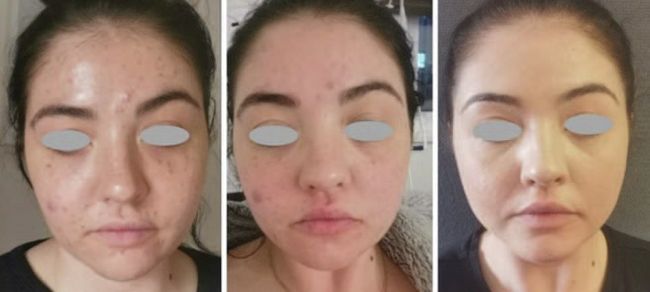CLINICAL
The Power of Polynucleotides
Aesthetic Dentist Dr Antonis Petrou-Amerikanos explains how polynucleotides regenerate skin and shares a case study of fantastic results using Plenhyage XL
Dr Antonis Petrou-Amerikanos
Regenerative medicine is getting a lot of attention within aesthetics at the moment – all for the right reasons. While tackling the symptoms of ageing is great (and something we all do very successfully), there’s nothing better than addressing the cause. And polynucleotides do just that.
UNDERSTANDING POLYNUCLEOTIDES
Polynucleotides are linear biopolymers that are made up of several nucleotide monomers with covalent bonds in a chain. Each strand consists of an alternate sugar and a phosphate group, with DNA and RNA generally being the two major categories of nucleic acid.
In simple terms, they are DNA molecules that when injected into the skin can stimulate fibroblasts to repair tissue, encourage cell turnover, improve elasticity and boost collagen production. They can also calm inflammation and rebalance melanocyte activity to create an even and refreshed skin tone.
The polynucleotides used in my product of choice – Plenhyage XL – are natural, highly purified DNA molecules, derived from royal wild salmon off the coast of Alaska. Extracting the polynucleotides does not cause any harm to the salmon.
I love to research new innovations and was impressed with the clinical data behind this brand. Studies have found that Plenhyage XL boosted collagen by 47%, increased epidermal thickness by more than 50%, improved elasticity by 38% and increased hydration levels by a massive 115%.
While it’s new to the UK, Plenhyage XL has been around in Europe for more than seven years and has a great reputation in general medicine for wound healing too. This inspired me to introduce it to my patients.
Since doing so, I have seen fantastic results. Here I share a successful case study…
CASE STUDY
The concerns
Amy is a 27-year-old female patient who initially presented to me complaining of acne and scarring. Her skin had suffered from breakouts since her early teens, and she has never had success with the over-the-counter products she had been using. Amy also suffered from eczema around her lips, for which her GP had prescribed steroid cream, but again she hadn’t seen much improvement.
Further facial analysis indicated that Amy’s skin was plump and didn’t need filling, while her wrinkles were minimal so botulinum toxin wasn’t necessary. We simply needed to focus on her skin quality.
The treatment
Getting Amy on a good skincare routine was my first step. I recommended a good cleanser and vitamin C for the day, along with a night cream that contained mandelic acid, which treated her concerns without dehydrating the skin. Moisturiser morning and night was also advised, alongside daily use of SPF. Using polynucleotides was a natural choice for my next stage of treatment. After taking a thorough medical history and providing a detailed consultation of what to expect, I booked Amy in for her first of three treatments. When she arrived, I disinfected her skin and applied numbing cream to reduce the pain of the injections. Plenhyage XL Medium has a 2% high molecular weight of polynucleotides and comes in a 2ml syringe, which is usually enough to treat the whole face. I therefore injected 1ml on either side of Amy’s face using a microbolus technique.
The product is also available in Strong, which has a higher molecular weight of 2.5% polynucleotides and is generally used on areas other than the face such as the neck, décolletage, inner arms and thighs, and knees.
While some aesthetic products such as hyaluronic acid should be avoided in the peri-ocular area, polynucleotides can be hugely beneficial and offer fantastic results, so I took advantage of this for Amy’s treatment and injected around her eyes.
The procedure took just half an hour and was repeated twice, spaced four weeks apart.
The results
After just one treatment, a reduction in Amy’s acne and scarring was noticeable. After she completed her course of three treatments, results were significant. Amy was no longer suffering from breakouts, the appearance of scarring had reduced, there was less redness and her eczema had improved. Amy was delighted with the results, which are expected to last between six and nine months.
In terms of side effects, patients may experience slight bruising as a result of injection but this can be avoided with good technique and usually only lasts a couple of days. Blebs may be noticeable after use with Plenhyage XL Strong, which will generally disappear after 24-48 hours when the material spreads out. No cases of hypersensitivity have been reported so far.

Before, immediately after first treatment and two days after second treatment – pics for third treatment to follow
Summary
Polynucleotides are an exciting new tool to add to our treatment portfolio. They offer something different from the usual options; really focusing on regenerating skin from the source. They can also be used in combination with other treatments such as toxin, filler, microneedling and radiofrequency. Regenerative medicine is the future of medical aesthetics and, in my opinion, the power of polynucleotides cannot be underestimated.
DR. PETROU-AMERIKANOS
Dr. Petrou-Amerikanos qualified as a dentist in 1985 and has a wealth of knowledge and experience within the aesthetic industry, regularly attending conferences and exhibitions to keep up to date with the latest technology and techniques. His holistic approach and outstanding care to patients have seen him grow a loyal following of clients.